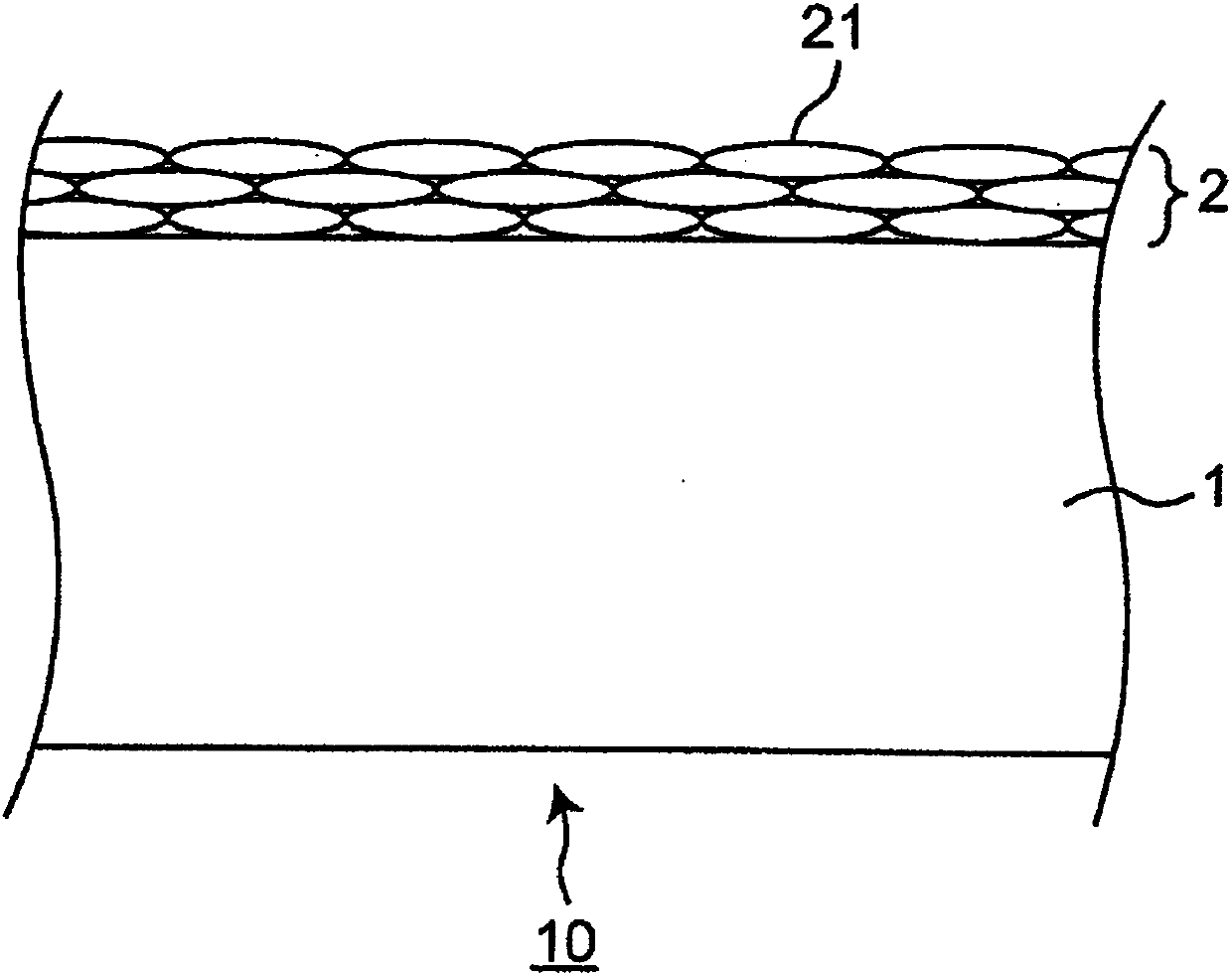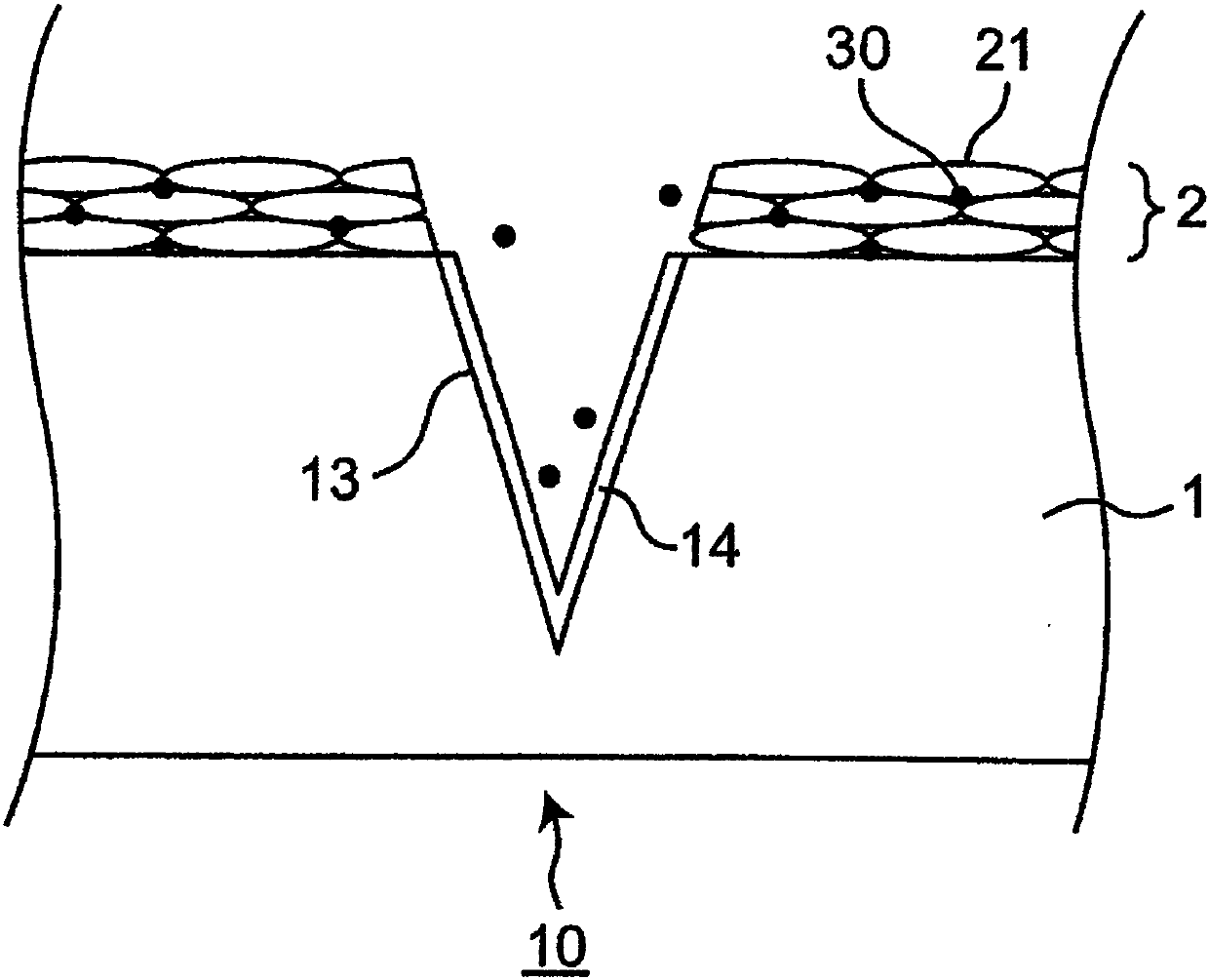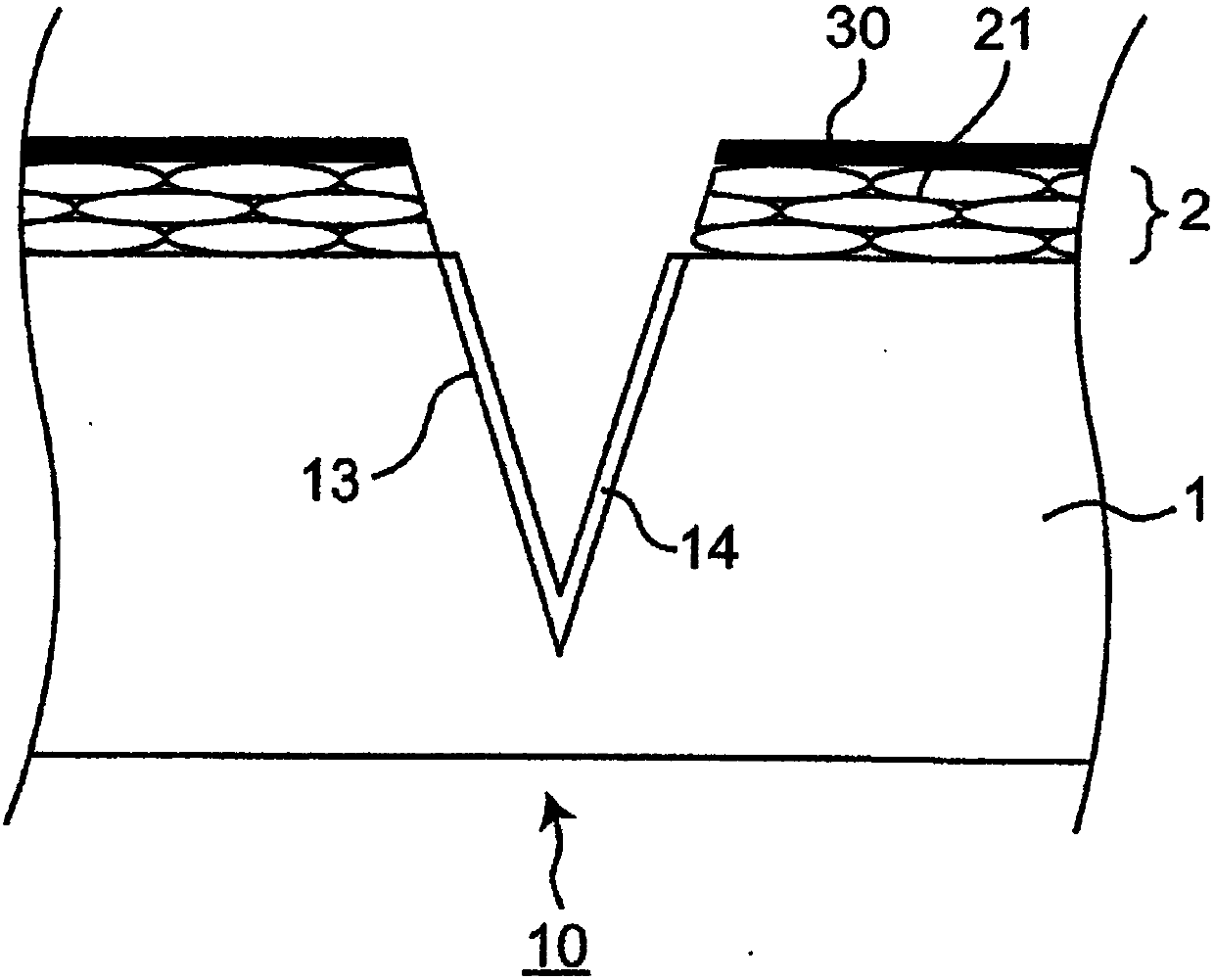Repair agent and repair method for plated base, as well as plated base
A repairing method and repairing agent technology are applied in the field of plating substrates and repairing agents for plating substrates, which can solve problems such as inability to obtain corrosion resistance, and achieve excellent sacrificial corrosion resistance, excellent protective film forming ability, and sufficient The effect of corrosion resistance
- Summary
- Abstract
- Description
- Claims
- Application Information
AI Technical Summary
Problems solved by technology
Method used
Image
Examples
Embodiment A1
[0073] exist Figure 5 In the apparatus 50 shown, a carbon steel sheet (high tension material) (12 mm×12 mm) (content ratio: carbon 0.5 wt %, silicon 0.02 wt %, manganese 0.2 wt %, phosphorus 0.1 wt %, sulfur 0.1 wt %, The remaining part is iron) as the working electrode 51, which was immersed in the air-saturated test solution (35°C) 52 for 24 hours, and the spontaneous potential was measured. The test solution was prepared by dissolving sodium dihydrogen phosphate, ATMP and zinc sulfate as repairing agents in an aqueous sodium salt solution. The sodium salt concentration was 0.5% by weight, the sodium dihydrogen phosphate concentration was 500 ppm, the ATMP concentration was 500 ppm, and the zinc sulfate concentration was 500 ppm. The pH of the test solution was adjusted to 6.2 with NaOH / HCl. The counter electrode 53 is a platinum electrode, and the reference electrode 54 is an Ag / AgCl electrode.
[0074] Then, while the working electrode 51 was immersed in the test solut...
Embodiment A2
[0100] Cathodic polarization was performed in the same manner as in Example A1, except that the concentration of sodium salt used as the test solution was set to 3.5% by weight. The protective film on the surface of the cathodically polarized working electrode was used for thermogravimetric analysis (TG). The results are shown in Figure 13 .
Embodiment B1~B10 and comparative example B1~B6
[0105] The cathode current value was measured by the same method as Example A1 except that the predetermined compound was dissolved in the test liquid in a predetermined amount, and the current inhibition rate E was calculated. The kinds and amounts of compounds in each Example / Comparative Example are shown in the following table.
[0106] The current suppression ratio E was graded according to the following method.
[0107] (-0.8V)
[0108] S: E = more than 85%;
[0109] A: E = more than 80%;
[0110] B: E=75% or more;
[0111] C: E=70% or more (no problem in use);
[0112] D: E=less than 70% (no problem in use).
[0113] (-1.2V)
[0114] S: E = more than 91%;
[0115] A: E=88% or more;
[0116] B: E=85% or more;
[0117] C: E=76% or more (no problem in use);
[0118] D: E=less than 76% (no problem in use).
[0119] 【table 5】
[0120]
[0121]
[0122] Each amount shown in (2) is a ratio with respect to the total amount of sodium dihydrogen phosphate, ATMP, ...
PUM
 Login to View More
Login to View More Abstract
Description
Claims
Application Information
 Login to View More
Login to View More - R&D
- Intellectual Property
- Life Sciences
- Materials
- Tech Scout
- Unparalleled Data Quality
- Higher Quality Content
- 60% Fewer Hallucinations
Browse by: Latest US Patents, China's latest patents, Technical Efficacy Thesaurus, Application Domain, Technology Topic, Popular Technical Reports.
© 2025 PatSnap. All rights reserved.Legal|Privacy policy|Modern Slavery Act Transparency Statement|Sitemap|About US| Contact US: help@patsnap.com



